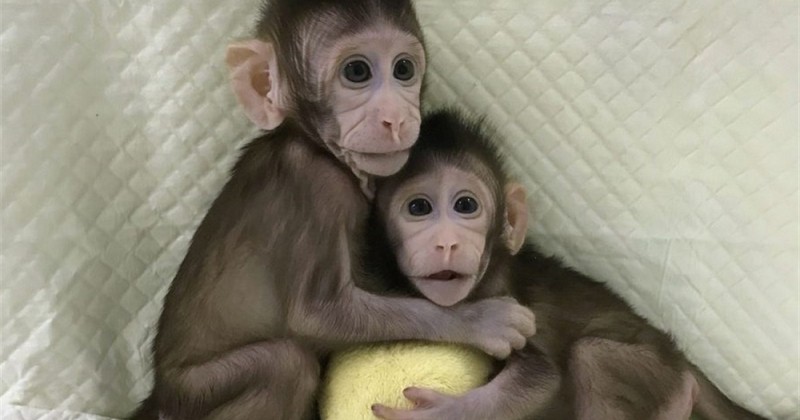The first monkeys have been cloned using the Dolly method

It is the first time that two specimens of our evolutionary branch, the primates, have been cloned.
Zhong Zhong and Hua Hua have been presented to the international community, two macaques that were born cloned using the Dolly method, the famous sheep that could be cloned using the Dolly method.the famous sheep that was successfully cloned a little more than two decades ago. This has happened thanks to the Chinese Academy of Sciences in the macro city of Shanghai, in a decisive moment where the debate on genetic manipulation and "a la carte" is on the table. The results have been so surprising that scientists predict a profitable breakthrough in the field.
In addition to having exceeded initial expectations and observing the normal behavior of primates both physically and psychically, the scientists involved claim that in the future they will be able to genetically modify these animals as a pilot test for a possible human genetic modification aimed at reducing hereditary diseases such as Cancer or Alzheimer's disease.
Cloning primates is already a reality
The whole world was stunned when the first successful cloning of a mammal, the famous Dolly the sheep, was announced back in 1996. This was a milestone and an exponential advance in the scientific field linked to genetics, and since then attempts have been made to work with the evolutionary branch of primates to be able to demonstrate the possibility of to create creatures without malformations or deficiencies.. To date, it has only been possible to clone mammalian species, with a total of 23 of them.
However, a few years after the Dolly phenomenon, an unsuccessful attempt was made in the United States to clone a monkey, albeit with a different technique. This involved emulating the division of an embryo in two to produce twins. Back in 2007, another team of American researchers cloned monkey embryos, but they did not become viable.
The Dolly method
As was the case with Dolly the sheep, the method used to clone these two primates has been that of nuclear transfer from a cell of a single individual, taking fibroblastby taking fibroblasts from the tissue of a monkey fetus. These nuclei were inserted into empty eggs and, once fertilized, were incubated by mothers until they gave birth to Zhong and Hua. They were so named because Zhonghua means "nation".
Mu-Ming Poo, co-author of the primate research and director of the Shanghai Neuroscience Institute, warns that there are no barriers to cloning primates, making it increasingly feasible to clone humans because they share very similar genetics. At the same time, he wanted to go ahead and answer the million-dollar question: will this be useful for cloning humans? The primary objective for the moment is to produce non-human primates for research, without any intention of extending it to people.
Controversy and controversy
Many people will think how dangerous it can be to "play God". For decades, human beings have been going beyond their imagination and the limits of science to achieve milestones that are a priori impossible, such as stepping on the moon, reproducing bionic limbs, and now it seems that the creation of human beings is getting closer and closer. Remember the Frankenstein film.
It turns out that the crux of the matter does not lie in whether or not it is possible to reproduce humans genetically or to the consumer's taste. The main goal is to develop new methods to investigate the causes of common diseases. investigate the causes of common diseases, prevent or even cure them.prevent or even cure them. The pharmaceutical industry spends enormous amounts of money to produce pills that, for all practical purposes, do not eliminate the problem, but only attenuate its symptoms. But in many cases, drugs that are tested on mice and prove effective, have no effect on humans. The possibility of cloning at least parts of the human body could serve to make this research more reliable and valid.
Definitive results?
Even if the results of the cloning of these two primates are a real success, it is still premature to assume that from now on it will be easy to continue to do so. Of the more than 100 embryos developed and transferred with fibroblasts, only six pregnancies were achieved and only two of them were born generating healthy clones. Thus, the tests continue to show a clear deficiency in the technique. With another test carried out on almost 200 embryos, the results were equally poor: from 20 pregnancies, only 2 specimens were born and perished soon after.
Other experts from the Western world, such as Lluís Montoliu, from the Spanish National Research Council, believes that it is truly unethical to use this technique because of the excess of embryos used to achieve such poor results. embryos used to achieve such poor results. According to Montoliu, twenty years after Dolly, the conclusions and results are still the same.
(Updated at Apr 15 / 2024)